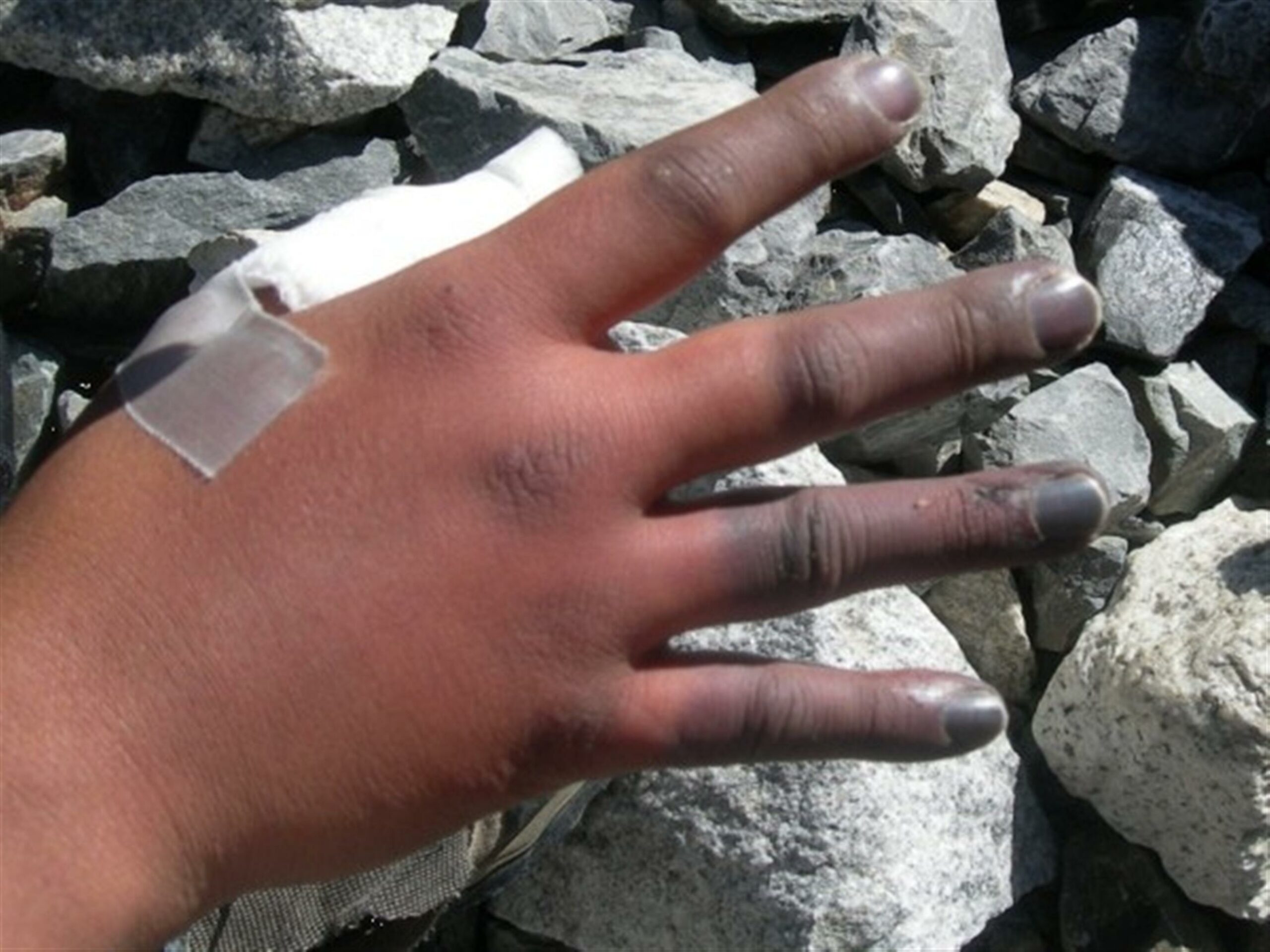Frostbite: Symptoms, Causes, Treatment
What are the symptoms of frostbite?
Frostbite occurs when skin and other tissues freeze due to exposure to cold temperatures. Symptoms of frostbite can vary depending on the severity of the condition, and they typically occur in stages:
- Frostnip: This is the mildest form of frostbite and often affects the extremities, such as the fingers, toes, nose, or ears. Symptoms include cold skin and a prickling or numb sensation. The skin may appear red or pale.
- Superficial frostbite: In this stage, the skin may become numb, hard, and pale. It may also feel warm to the touch, which is a sign of rewarming injury. Blisters may develop after rewarming.
- Severe frostbite: In severe cases, frostbite can affect deeper tissues, such as muscles and nerves. Symptoms include numbness, aching, and a white or bluish-gray color to the skin. Blisters may develop, and the affected area may become hard and cold to the touch.
In all cases of frostbite, it’s important to seek medical attention from a qualified healthcare provider. Severe frostbite can lead to permanent damage and may require medical treatment such as rewarming therapy, wound care, and, in extreme cases, amputation of the affected area.
What are the causes of frostbite?
Frostbite occurs when skin and other tissues freeze due to exposure to cold temperatures. The primary cause of frostbite is prolonged exposure to cold weather conditions, but other factors can increase the risk, including:
- Cold temperatures: Exposure to temperatures below freezing, especially with high wind speeds, increases the risk of frostbite.
- Wind chill: Wind can cause the body to lose heat more rapidly, increasing the risk of frostbite.
- Moisture: Wet or damp skin loses heat more quickly than dry skin, increasing the risk of frostbite.
- Tight clothing: Clothing that is too tight can restrict blood flow, making it harder for the body to stay warm.
- Immersion in cold water: Immersion in cold water can lead to rapid heat loss and increase the risk of frostbite.
- Altitude: The risk of frostbite increases at higher altitudes, where temperatures are lower and the air is thinner.
- Medical conditions: Certain medical conditions, such as diabetes and peripheral artery disease, can impair blood flow and increase the risk of frostbite.
It’s important to dress warmly and protect exposed skin when temperatures are low to prevent frostbite.
What is the treatment for frostbite?
The treatment for frostbite depends on the severity of the condition. For mild cases, the following steps can be taken:
- Rewarming: The affected area should be gently rewarmed using warm water (not hot). The water should be around 37-39°C (98.6-102.2°F). Avoid using direct heat sources, such as fire or heating pads, as they can cause burns.
- Pain relief: Over-the-counter pain medications, such as ibuprofen or acetaminophen, can help manage pain and reduce swelling.
- Protect the skin: After rewarming, keep the affected area clean and covered with a sterile dressing to protect it from further damage.
For more severe cases of frostbite, medical attention is necessary. Treatment may include:
- Medical rewarming: A healthcare professional may use special techniques, such as warm water immersion or heated blankets, to rewarm the affected area.
- Medication: In some cases, medication to improve blood flow, such as vasodilators, may be prescribed.
- Wound care: Severe frostbite can lead to tissue damage and the formation of blisters or ulcers. Wound care may be needed to prevent infection and promote healing.
- Surgery: In extreme cases, surgery may be necessary to remove dead tissue (debridement) or amputate severely affected limbs.
It’s important to seek medical attention if you suspect frostbite, as early treatment can help prevent complications and long-term damage.




